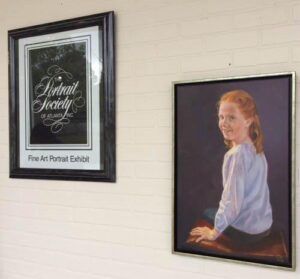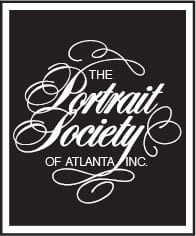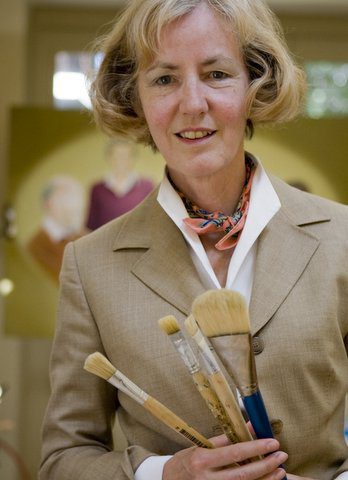Editor’s Note: With this article, the Portrait Society of Atlanta renews a series of Member Spotlight articles as had been featured in our older editions of FOLIO. This first in the series is written by Elske Wilton, a member from the Netherlands.
From a Dutch family of academics and artists, Elske studied Spanish and Arabic at the Universities of Utrecht and Leyde. Later, she completed her Master’s Degree at the Canberra School of Art in Australia. Together with her husband, she first worked as a war correspondent for seven years during the Lebanese civil war. After this, she followed her then diplomat husband around the world to Australia, Germany, Sweden and Malta. Elske has been drawing faces as long as she can remember.
“I remember being all alone on a new posting and searching for any portrait society and seeing Gordon Wetmore’s kind face as President of the PSoA. Instantly, I became an international member and later a member of the Portrait Society of Atlanta as I have many friends there. Portraits in charcoal and oils are the joy of my life.”
We hope you will enjoy what she had to say when asked, “How different it is to pursue art in the Netherlands?” In her own words…

ELSKE WILTON
The Netherlands is a small, well organized country with excellent infrastructure, excellent social security, and healthcare. Whether you are a Syrian refugee or one of the Royals, the same doctor will treat both with equal medical treatment to all Dutch citizens. Differences between the richest people and the poorest are a lot smaller than in the USA.
Culturally speaking, abstract art was the norm here for a long time, as it was all over the world, and the art schools here taught only that. Beginning about 20 years ago, new art schools began focussing on figurative drawing and painting. In the Netherlands, we have many excellent museums, and Rembrandt’s home is only 15 minutes by car from where I live. In the Golden Era (about 1600 – 1700 AD), we had about 250 newly rich families living in Amsterdam. To ensure their social standing, they required many portraits. Skilled portrait artists were in demand, and, as they were very well paid, this was an attractive job. The quality of their work was exceptional, and, to this day remains the gold standard for portrait artists all over the world.
This portrait tradition, however, is a thing of the past. Unlike in the US or the UK, we no longer have this tradition of painting portraits of every politician, lawyer, professor, or admiral. The Dutch King and Queen are not interested in having their portraits painted and displayed everywhere as in the UK.
The oldest gentlemen’s club in the Netherlands, which is very old fashioned, has my portrait drawing of King Willem-Alexander on its wall. But this is rare. The more general opinion is that a good photograph will do the job just as well. We are a sober lot. This means that the market is very small and private commissions are rare.
That is why very few artists survive by their portrait commissions alone. Most of us must teach to supplement our income. This is a good thing because Holland is a country of hobby painters. Every small village has a centre for cultural activities where painting classes are available.
Like I said, the Netherlands is a different country from the US. We can rely on a well-oiled system of government and institutions. However, the other side of this shiny coin is that it is a greater challenge to earn your living as a portrait painter here than in the US. We are too small for a Portrait Society of the Netherlands. Even a European Society is not viable because of all the different European languages.
What I miss most over here are heroes as you have in the US, like Raymond Everett Kinstler, He always inspired everybody during the Portrait Society of America conferences to work harder, to do your best to make better paintings, and to always continue learning. He was passionate in his mission to inspire artists be passionate about their art. This is exactly what I miss so much over here: passion. We lack heroes and challenges.
Because our economy is thriving, people don’t need to do more than is required. Too much passion or too much intensity is considered a bit weird. That is why I like to come over the ocean to the conferences of the Portrait Society of America for renewed inspiration.
The grass is not greener over here in the Netherlands, the gardeners however are very different.
Visit Elske Wilton’s website at www.elskewilton.com.


